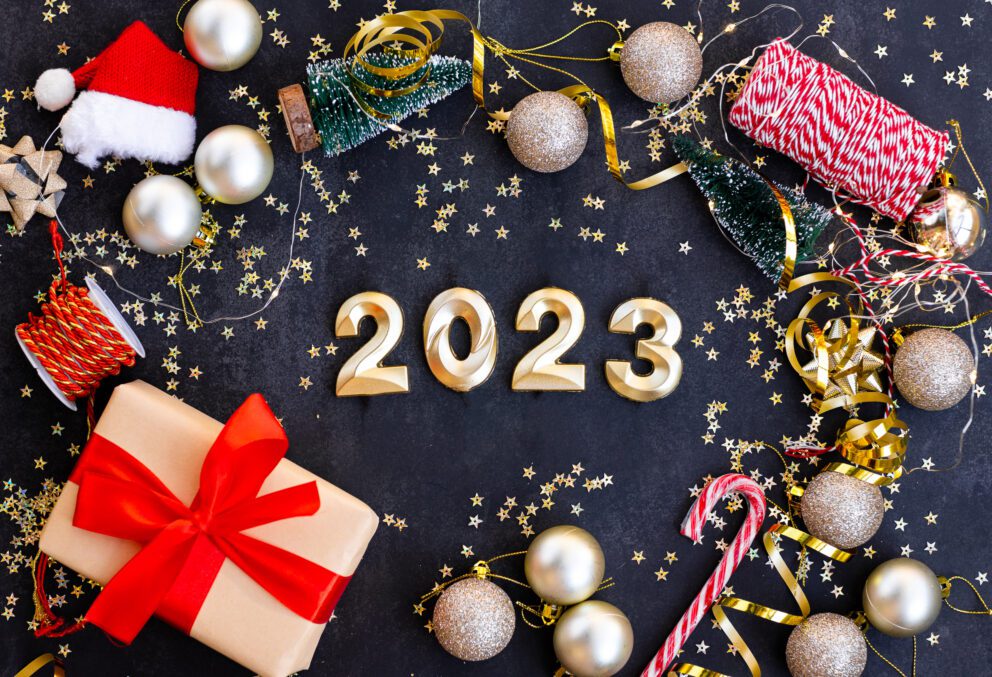
2024 Holiday Marketing Trends to Follow to Boost Sales
Despite a challenging sales environment, retailers are heading toward another year of growth during the holiday season. How did they pull it off? The holiday marketing trends 2024 leaders are embracing result in fresh approaches and immersive experiences that engage shoppers and speak to their individual needs.
These holiday marketing campaigns highlight best practices to follow not just during the peak season, but year round. Merchants studying these trends can optimize their programs not just during the peak season, but year round – creating lasting connections with shoppers and boosting sales.

Advancements in Ecommerce Personalization and Optimization
The 2024 holiday season has been one of competing and contradictory priorities for shoppers, who harbor abiding uncertainties despite a stable economy and low unemployment. For example, online spending was up 9.6% on Cyber Monday – but so was stretching dollars through financing, with usage of “Buy Now, Pay Later” jumping 42.5%, according to Adobe Analytics. Heading into the season, 79% of consumers said they were “trading down” when they shopped, even as 40% said they would splurge, data from McKinsey found.
To navigate these conflicting impulses to create successful holiday marketing campaigns, understanding individual priorities is a must. Successful retailers are accommodating shoppers with granular personalization of promotions and content.
1. The Rise of Ecommerce Personalization
Shoppers’ expectations have grown for digital experiences to reflect their individual priorities. The percentage of consumers who expect companies to understand their needs and expectations jumped 11% since the pandemic, to 73%, while 56% now expect offers always to be personalized, according to Insider Intelligence/eMarketer.
Retailers can meet this expectation by tailoring site experiences and marketing offers, especially during the holidays, when time-pressed shoppers appreciate shortcuts to the most relevant products. In the long term, highlighting picks that reflect individual preferences and past purchases earns brand trust, fostering loyalty.
2. Automated Personalization in Marketing
Given the high demand for personalization, it’s no surprise that heading into the peak season, 66% of retailers surveyed by Bolt were focused on building customer profiles that would help tailor product recommendations, holiday email marketing and digital ads. The rise of AI in retail has super-charged these efforts, enabling dynamic personalization that delivers individualized online experiences at scale and in real time.
3. The Power of A/B Testing in Refining Strategies
While some retailers are reluctant to run A/B tests during the holidays because they don’t want to put sales at risk, focused test runs with actionable results can help optimize offers for the rest of the season. Higher traffic during the holidays can help reach an adequate sample size faster, keeping tests brief.
To further de-risk holiday testing, focus on refinements rather than major strategy decisions. For example, you could test the language and font color in a promotional banner for a discount offer, rather than comparing whether a discount is better than a “buy one, get one free” promotion.
4. Aligned Sales and Marketing Teams Boost Holiday Agility
While the holiday marketing calendar is often set months in advance, retailers leave wiggle room to respond to real-time data and adjust their execution plans – especially as seasonal promotions begin earlier with each passing year. But the agility to act requires tight coordination among sales, merchandising, and marketing teams.
Vermont sock maker Darn Tough used Monetate’s personalization and testing tools to optimize holiday messaging. Democratized data reporting through easy-to-access dashboards made it easy to act on results, resulting in an 8.4% lift in conversion rates and a 12% increase in order values.
Digital Content and Channel Strategies
While holiday shoppers may start their journey with a specific list of gift picks, it takes more than products at the right price to win business. According to eMarketer, 88% of shoppers agree “the experience a company provides is as important as its products” – spotlighting the value of not only customer service, but rich digital and store experiences that support the entire customer lifecycle. To deliver high-quality holistic experiences, retailers are adopting holiday marketing strategies that deliver wraparound features and content from the moment shoppers begin researching gifts through to post-holiday gift card redemption and exchanges.
Sellers connect with shoppers via multiple brand outposts; Think with Google found the majority of consumers use at least five different channels when in holiday shopping mode. Destinations such as TiKTok and Instagram provide gift inspiration for a third of shoppers, according to Gallup, prompting merchants to get creative for merry social media holidays.
1. Short-Form Video Content Dominance
Thanks to the rise of TikTok, retailers are ramping up their video marketing capabilities and seeking innovative ways to appeal to new generations of consumers. Heading into the holiday season, more than three-quarters of brands were allocating funds to TikTok marketing, and 35% were buying ads on the platform, Business Insider/eMarketer reported.
2. Social Media as a Customer Service Avenue
Gone are the days when shoppers relied solely on a call center for purchasing help. One in five shoppers under 50 now directly message brands on social media, according to Hubspot data. To accommodate this shift, retailers are allocating customer service resources for social media holidays 2024 response, and also posting key customer service information, such as shipping cutoff dates for Christmas gifts, to proactively address shoppers’ questions.
3. VR and AR: Emerging Technologies in Marketing
To further strengthen brand experiences, retailers are turning to immersive technologies – virtual reality (VR) and augmented reality (AR). Shoppers with headsets can browse virtual bazaars in VR and simulate trying out gear in simulated environments. Using AR, shoppers can overlay products in real-world environments, which helps gauge whether size and style match requirements. AR can also be used to enrich store experiences with navigational aids and Pokemon Go-style treasure hunts.
Integrating Technology and Human Experience
Consumers now shop anywhere and at any time, and the holidays are no exception. On Black Friday, store visits jumped 4.6%, even as online revenues jumped 8.5%, according to CNN. To cater to these fluid behaviors, retailers should banish either/or thinking and internal silos to devise creative holiday marketing ideas that incorporate holistic brand experiences.
1. The Comeback of Experiential Marketing
Brand experiences that include opportunities to touch and try products, interact, and share with friends help create connections with consumers. Holiday pop-up shops, in-store events, and themed displays are among the ways retailers are creating next-level physical experiences. Online, interactive elements such as games, themed filters for social networks or live shopping events offer shoppers festive experiences.
2. Mobile Optimization as a Marketing Trend Must-Have
For years, shoppers have used their smartphones as sources of holiday research and inspiration – and over the Black Friday/Cyber Monday period in 2024, mobile purchasing overtook revenues from desktop and laptop browsers, according to Adobe Analytics, with nearly 52% of sales generated on phones. Retailers are catering to these shoppers with holiday retail marketing optimized for small screens, from easy-to-navigate interfaces to one-tap payments.
Navigating Holiday Digital Strategy Through SEO and Content Marketing Integration
Shoppers seek out inspiration for holiday gifts via multiple digital touchpoints, and retailers have responded by establishing brand outposts across the web. From social media to blogs, from email to SMS campaigns, marketers are orchestrating content and product information to engage shoppers and drive holiday sales.
1. The Essential Role of SEO in 2024
More than half of shoppers rank search engines as their top online source when researching products, Nielsen found, so search engine optimization to boost rankings in search results is essential for merchants who want to reach new audiences. Strategies that integrate paid placements, shopping listings that include product images, and keyword-rich content that attracts inbound links.
2. The Steady Force of Inbound Marketing
Retailers can engage shoppers by developing useful themed content, such as holiday gift guides, expert how-to videos and proactive customer service information describing services like store pickup and gift wrap options. This content not only enriches the eCommerce site experience and boosts brand visibility in search engines, but it gives retailers fodder to syndicate across social media channels and in social media campaigns – giving new reasons to visit to shoppers already following the brand.
Lessons Learned in 2024 for a Successful Holiday Marketing Strategy
Retailers headed into the 2024 holiday season are facing the specter of belt-tightening, but have realized sales gains through a mix of savvy promotions and engaging experiences both online and offline. As they face a new year of challenges, sellers can adapt successful strategies to build a strong foundation to support marketing efforts. Top takeaways from the holiday marketing trends include:
1. Personalization is Job 1.
Consumers expect online experiences to reflect their priorities, and with the economy continuing to promise uncertainty, retailers need the capabilities to respond to changing needs – showcasing the items shoppers want to splurge on and offering the right discounts to motivate sales.
2. Mobile is a Must.
As mobile-friendly content and one-tap payments grow in popularity, the percentage of online shoppers buying on their phones will only continue to grow. Retailers should test and optimize their eCommerce site for mobile users and incorporate tools like AR that integrate phone functionality to enhance the shopping experience.
3. Content is the Foundation of Authentic Marketing Success.
The peak season is a gift to merchants seeking holiday marketing ideas. Gift guides, how-to videos, themed selfie filters for social media, AR-powered navigation aids for store visitors and more are all opportunities to communicate your brand’s style, demonstrate expertise and proactively address customer service questions. Combining content with personalization tools ensures shoppers get the information most relevant to their gift-buying needs.
4. Real-time Testing and Analytics Enable Holiday Agility.
When retailers launch holiday initiatives, they’ve usually tested concepts in advance and mapped out a strategy for the season. But if sales surge – or, conversely, a promotion seems to be a flop – knowing what’s driving results can help merchants respond quickly with an adjustment. The ability to track results and even run quick A/B or multivariate tests during peak periods helps teams act with confidence, tweaking offerings to align with expectations and produce results.
